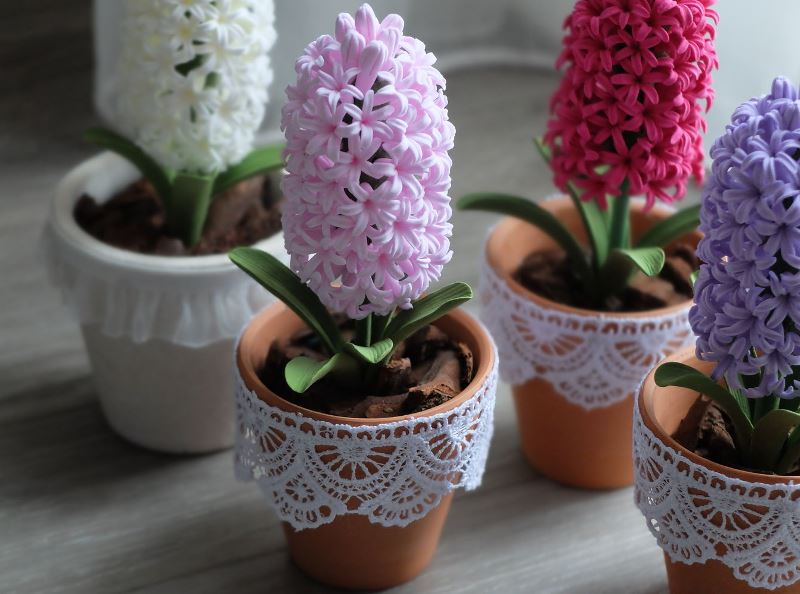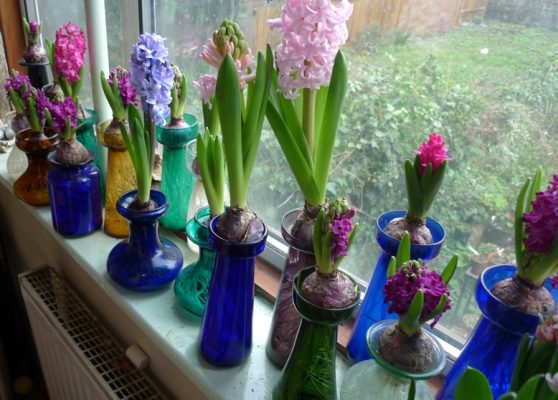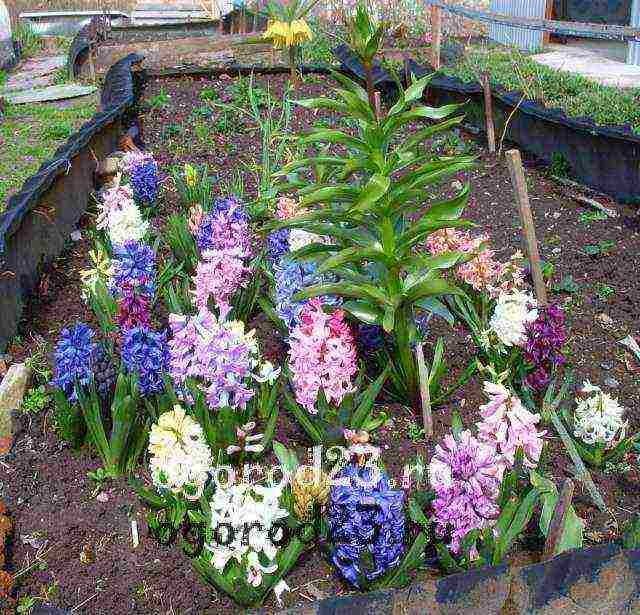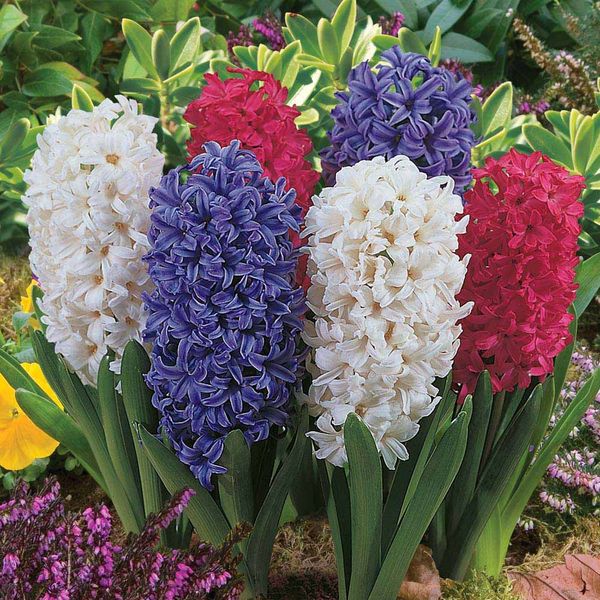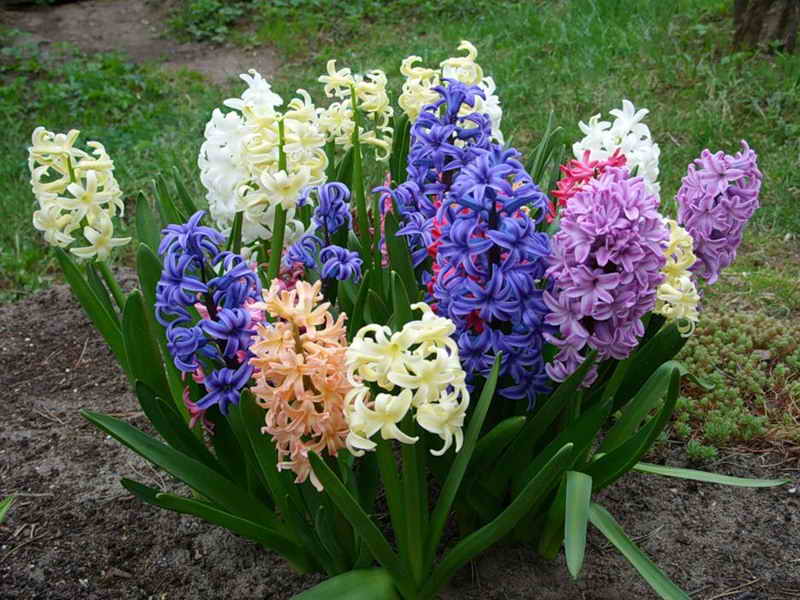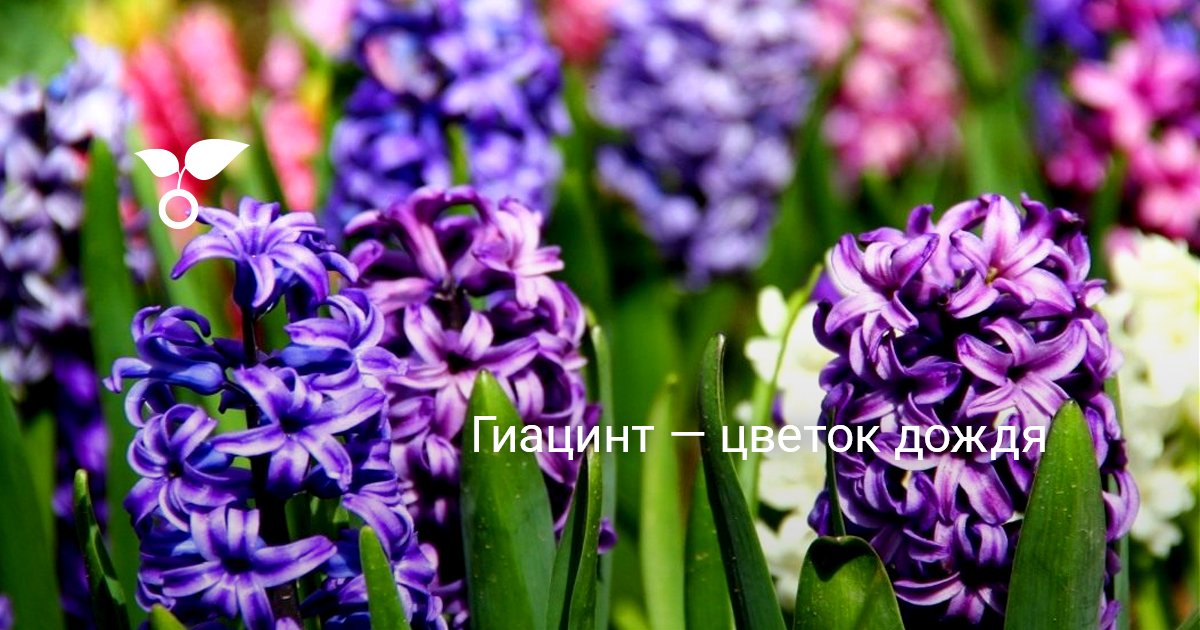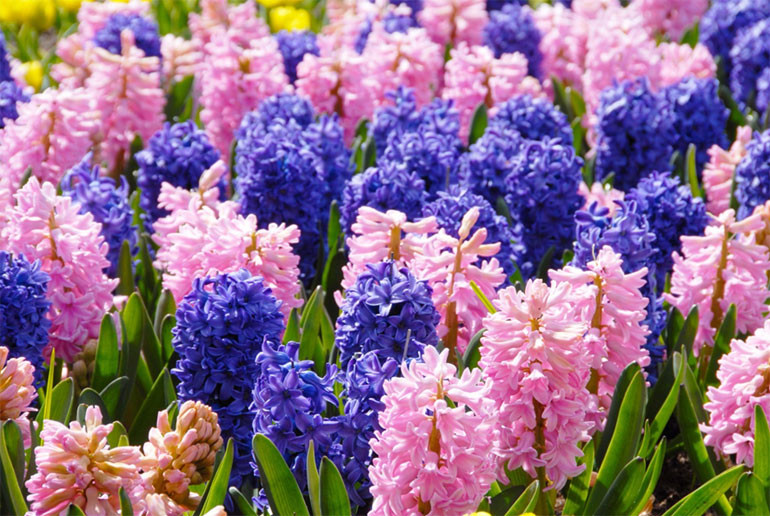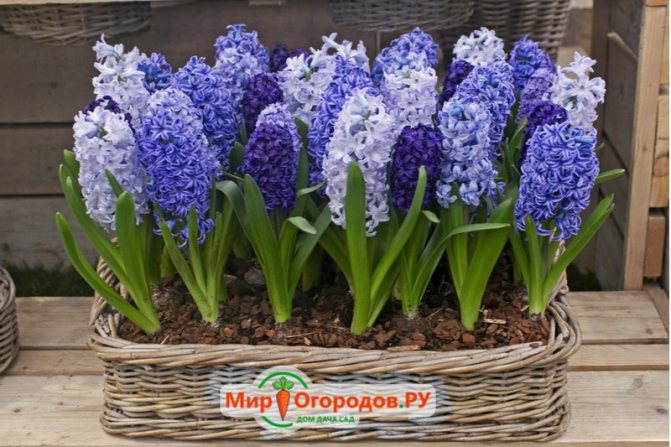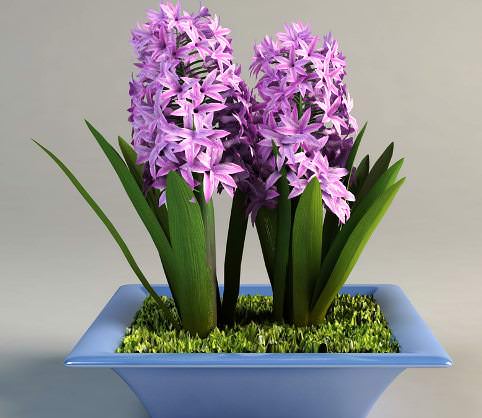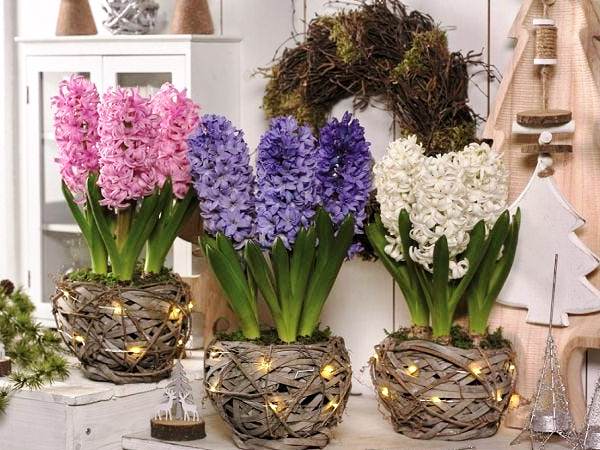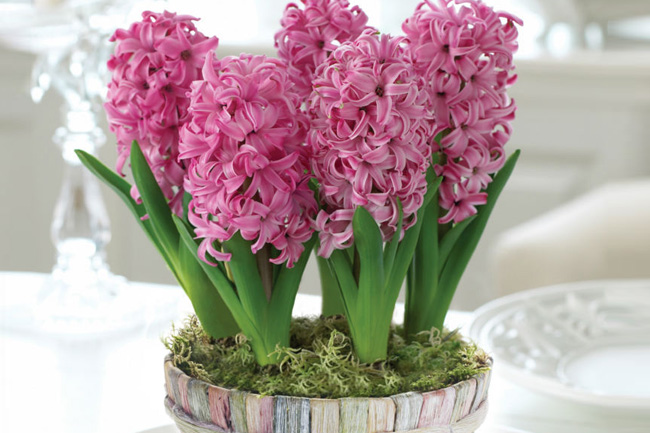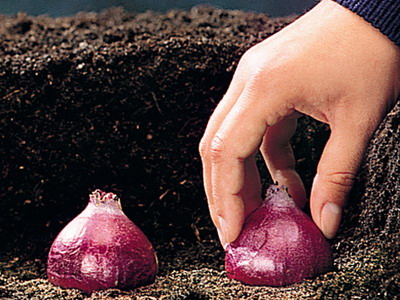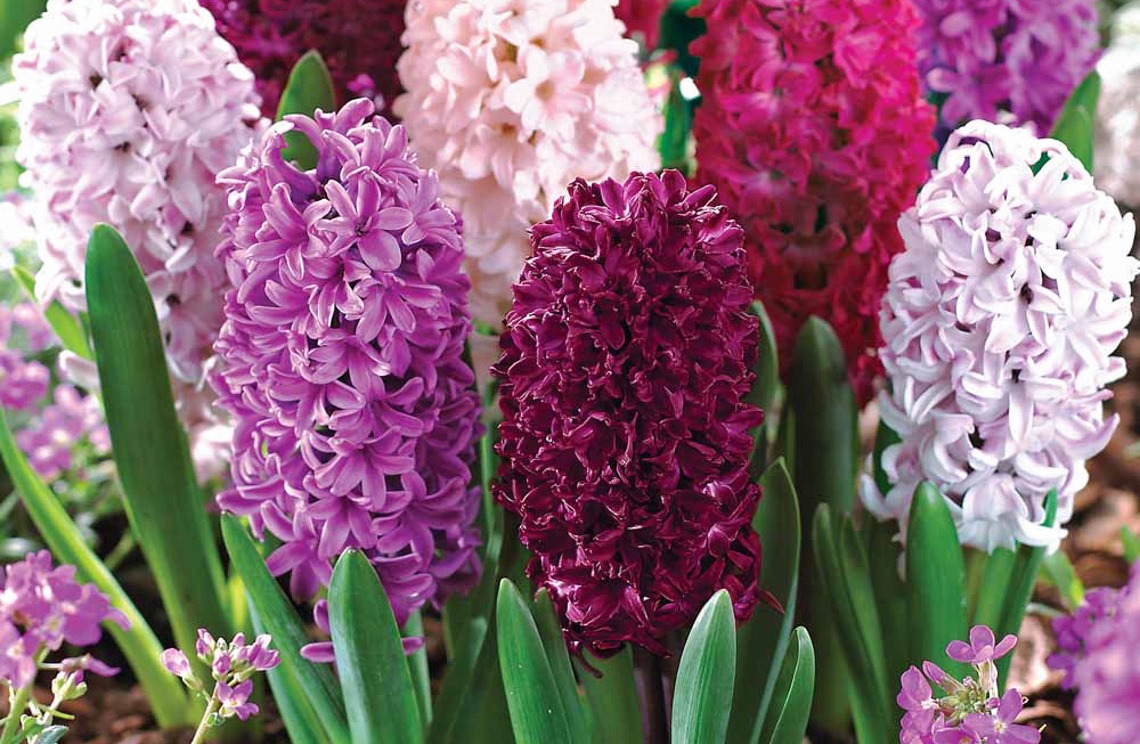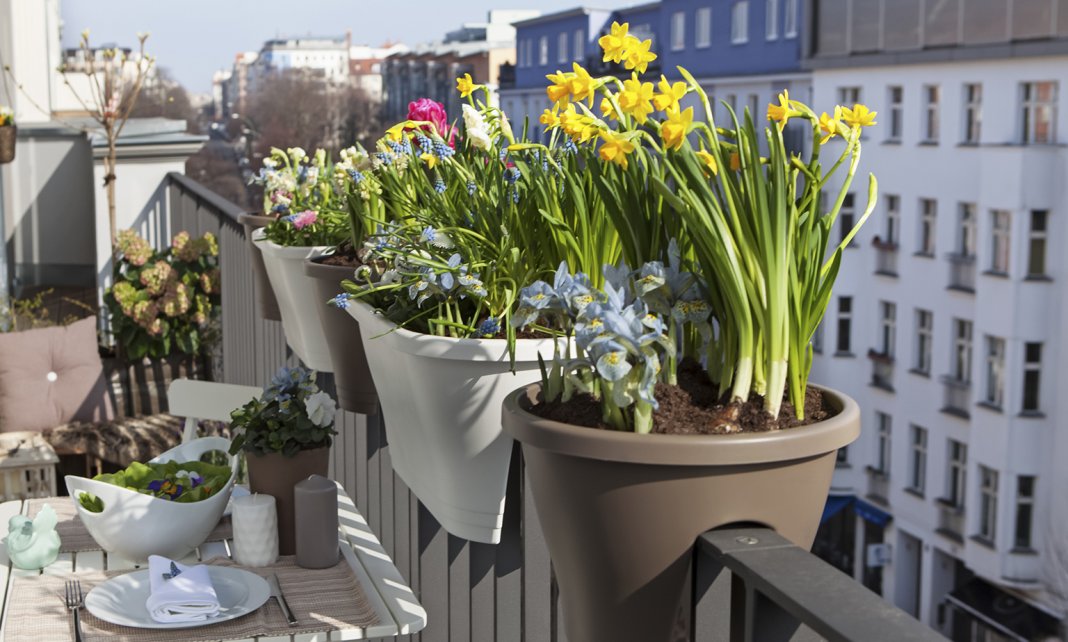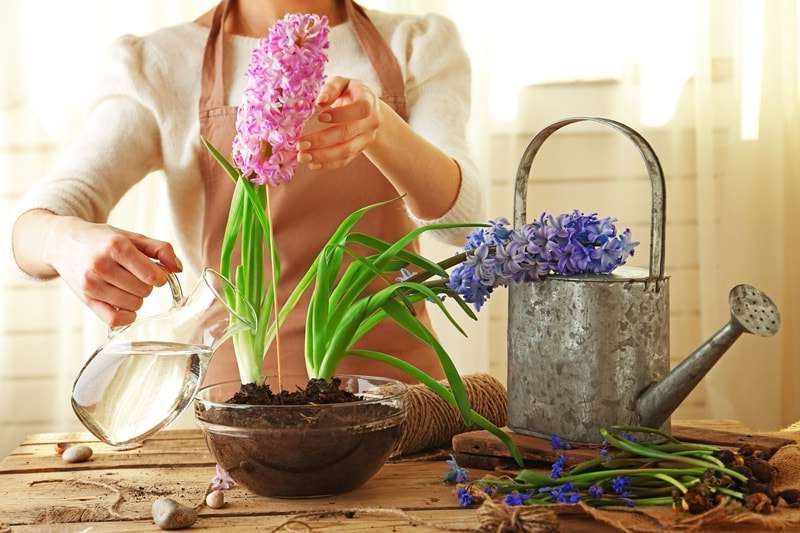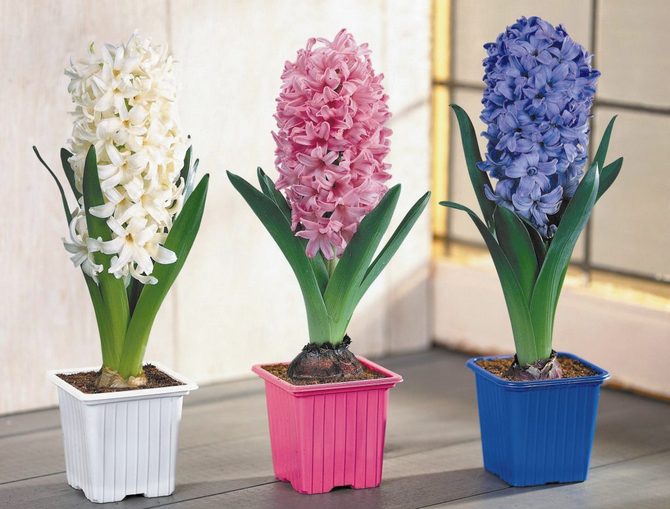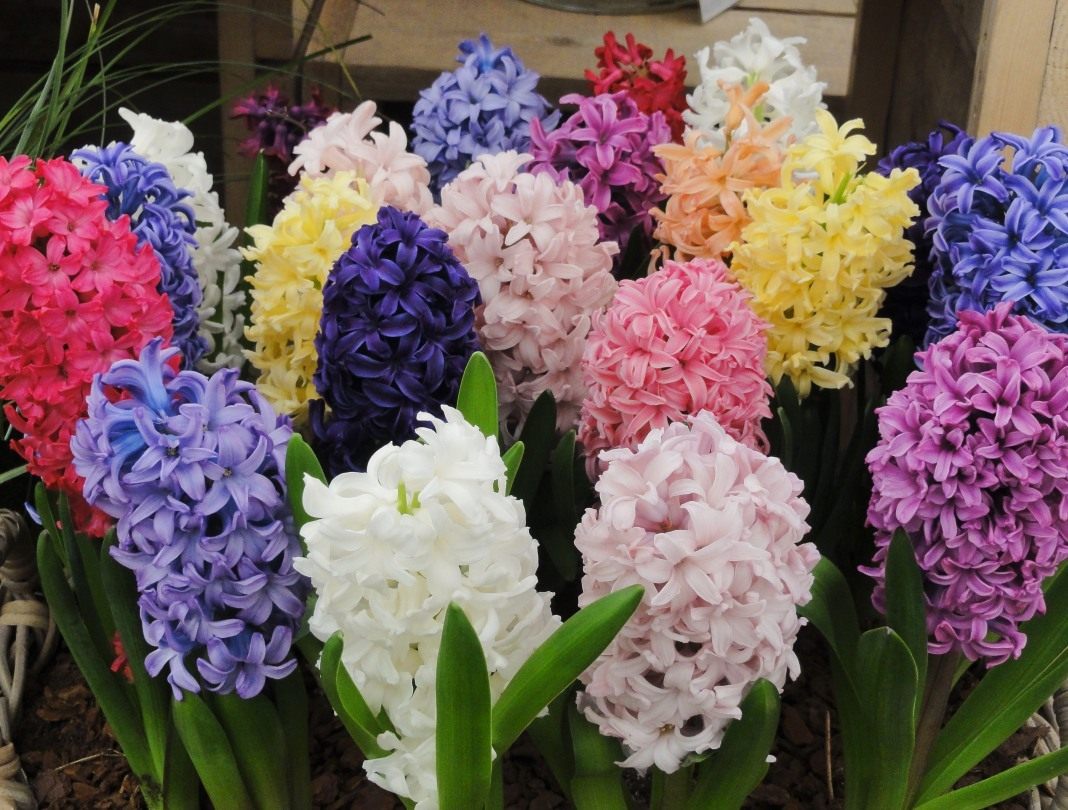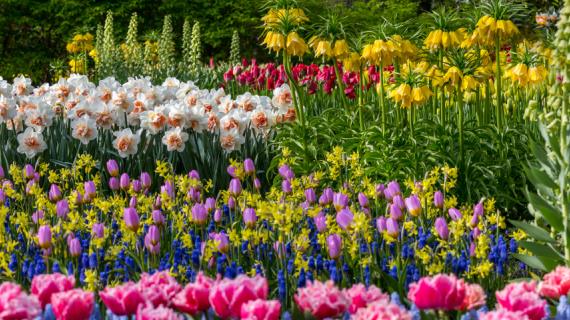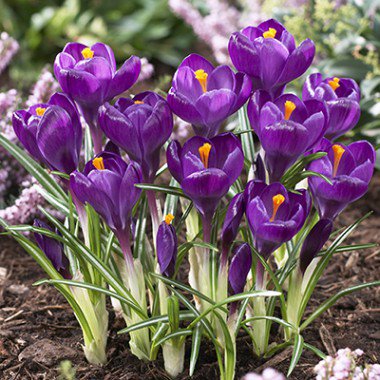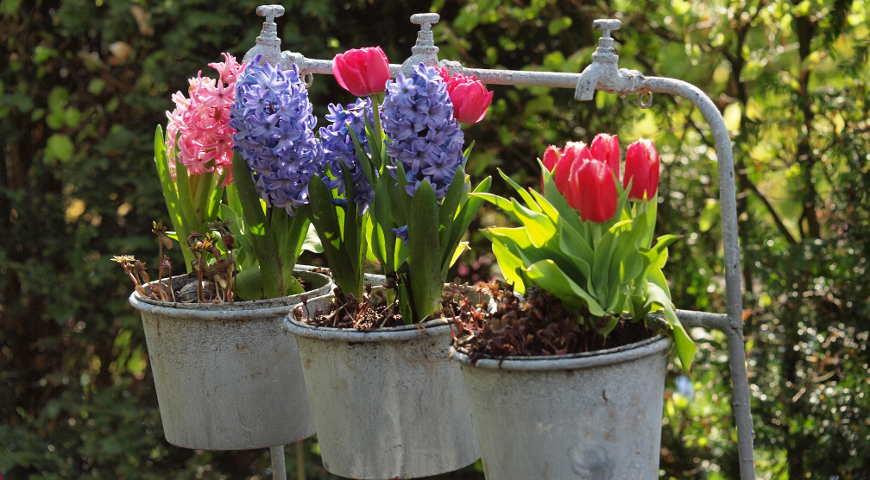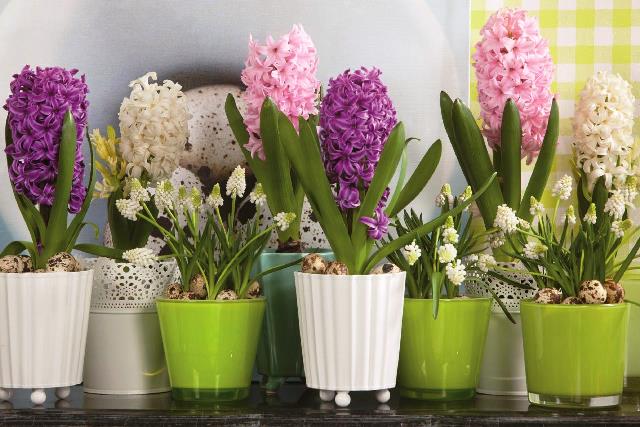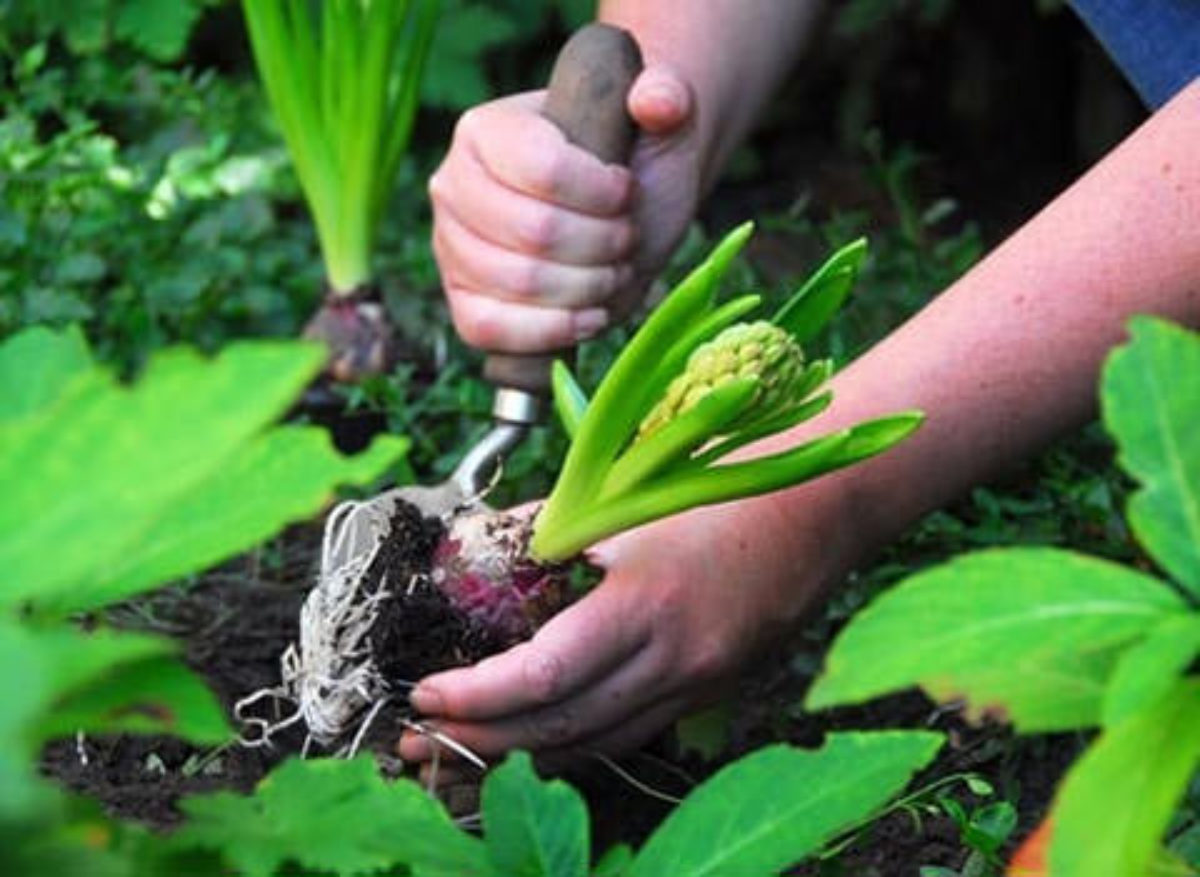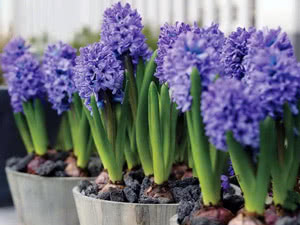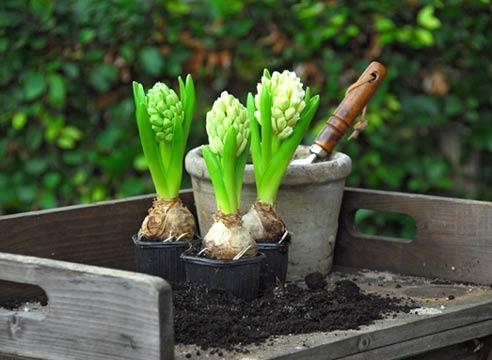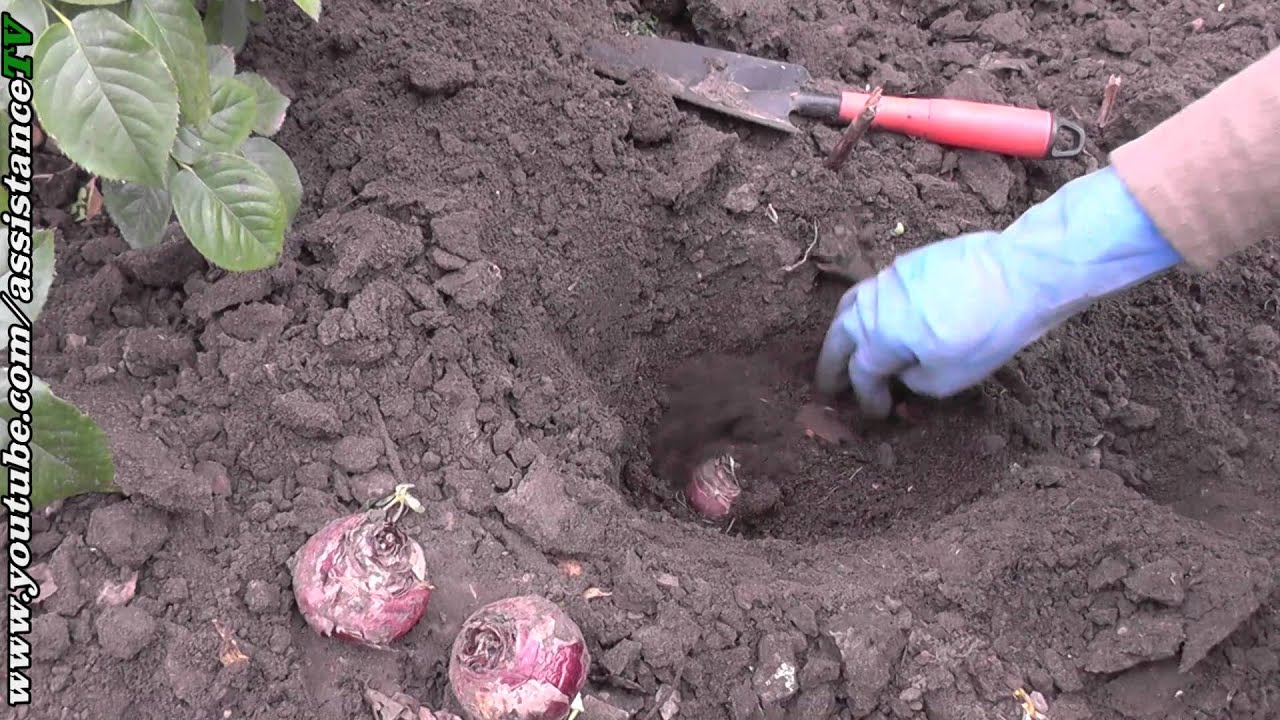Planting hyacinths in autumn - why at this time
In natural conditions, hyacinth is found in the Middle East and the Mediterranean. The weather is hot and dry there. Spring precipitation feeds the soil and its inhabitants with life-giving moisture, due to which the plants develop rapidly. But the summer heat quickly dries up the soil, the faded hyacinth is forced to fall asleep until the autumn months, when the rains revive the plant.
Thus, after flowering, the hyacinth root system should remain in dry soil and at high temperatures for several months.
This is the reason for the choice when to plant hyacinth in open ground - in autumn or spring.
Important! The hyacinth bulb does not have a dense protective shell that protects the juicy pulp. Hyacinth is instantly attacked by rot if the roots of the flower are in a humid environment.
Well-drained soil without stagnant water is the key to successful cultivation of hyacinth.
In the conditions of short and often rainy summers in our climate, hyacinth will not be able to pass the stage of sleep in the open field. To ensure proper vegetation, the plants are dug out after flowering, when the foliage and stems dry up. Store bulbs in dry and warm storage until autumn planting.
If you neglect this operation and leave the hyacinth in the garden, the plant can be affected by pests and diseases.
Sometimes circumstances force you to plant hyacinth in open ground in the spring. For example, a gardener purchased planting material in winter or early spring. Spring planting of hyacinth is carried out after thawing the soil and the end of frost. In central Russia, this is the end of April - beginning of May.
The bulb is placed in the ground to a depth of 10 to 15 cm on a sandy pad. From above, the hyacinth is also sprinkled with coarse sand to protect it from waterlogging.
The hyacinth planted in spring requires digging for the summer as well as flowers when planted in autumn.
Sometimes, in an emergency, hyacinths can be transplanted before or immediately after flowering. In this case, the plant is dug up with a large clod of earth, trying not to disturb the roots of the flower.

How is hyacinth distilled?
We recommend that you familiarize yourself
The greatest joy to the owners is delivered by hyacinths, which bloom in snowy and cold winters. However, not all flowering plants can boast of this feature. The technique with which you can achieve flowering in the cold season is called forcing hyacinth. However, it must be remembered that the cultivation of such interesting plants has its own characteristics.
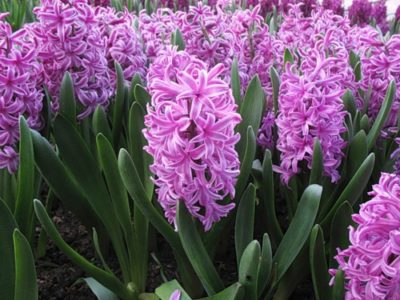
You should definitely pay attention to the choice of the bulb from which you need to grow the flower. After all, it can then be planted in a decorative pot or in the ground.
In this case, choose a bulb that is at least 5 cm in diameter, without damage, dense, not affected by fungus or rot. In the garden, forcing hyacinths will be more successful if you use small bulbs.
In order for such an unpretentious plant to give many flowers, each bulb immediately before planting in the ground must successfully go through certain stages of development. The dug out bulbs should be carefully stored at the most suitable temperature (+ 30 ° C) for 2 weeks. Then, for 1.5 weeks, they should be in a room with a temperature of no more than +25 ° C. And the remaining time before disembarkation, they must be kept at +17 ° С.
We plant each hyacinth bulb in a small pot. If you purchased the bulbs in a store, they went through all the above preparation steps. We can say that forcing hyacinths is quite simple.The planting time should be chosen depending on when you want beautiful flowers in your home. For example, if you want to have a gorgeous flower in your home for the Christmas holidays, plant the bulbs in October.
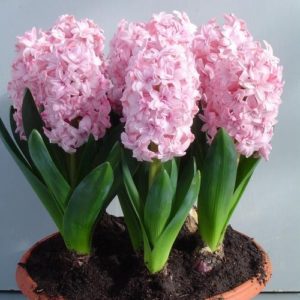
Planting hyacinths in open ground
Soil for hyacinths
These early flowers are grown in well-lit and protected from the wind places, away from bushes and trees, the roots of which do not allow hyacinths to develop fully. In the area where hyacinths grow, melt and rain water should not stagnate, so you need to choose places for planting flowers with a flat surface or under a slight slope. Groundwater should lie at the site no closer than at a depth of 50 cm.
Hyacinths prefer well-drained soils, with a high content of humus, but fresh or not completely decomposed manure is not suitable for fertilizing the site. Peat and river sand must be added to the clay soil for digging, and the acidic soil is neutralized with limestone or chalk, since hyacinth needs a pH of at least 6.5 units.
When to plant hyacinth
The area for hyacinths must be prepared at the end of summer, in August, so that the soil has time to settle two months before planting. If the site is dug up immediately before planting, then as a result of natural subsidence of the soil, the developing roots of hyacinths can break off. Dig up the soil to a depth of 40 cm, adding 10-15 kg of humus, 60-80 g of superphosphate, 15 g of magnesium sulfate (or 250-250 g of dolomite flour) and 30 g of potassium sulfate (or 150-200 g of wood ash ). Peat and sand are added to clay soil, and when processing sandy soil, the rate of magnesium and potassium fertilizers is increased by one and a half times. The acidic soil is limed two weeks before fertilization.
Planting hyacinths is carried out at the end of September or in October - the specific dates depend on the climatic and weather conditions of the area. If you plant hyacinths too early, they will grow and die in winter, and if you are late with planting, the bulbs will not have time to root before the soil freezes and, at best, will simply lie in the ground until spring, and at worst, they will die.
Planting hyacinths in the ground
When choosing planting material, preference should be given to medium-sized bulbs, the so-called "flower beds": the hyacinths that have grown from them form flower arrows that are more resistant to weather. Bulbs that are sluggish, soft, rotting and with mechanical damage are not suitable for planting. Healthy planting material is etched in a fungicide solution for half an hour and planted in the ground.
The distance between the holes in a row should be about 15-20 cm, and between the rows - 20-25 cm. Planting is carried out to a depth of three diameters of the bulb, that is, there should be a layer of soil two of its diameters above the bulb. A layer of dry coarse sand 3-4 cm thick is poured onto the bottom of the hole, then a hyacinth bulb is laid, slightly pressing it into the sand, after which the bulb is filled with sand to the top, and the space remaining in the hole is filled with soil. This planting method is called "sand shirt" and can be used when planting any bulbous plant in order to prevent bulbs from rotting from stagnant water. If you planted hyacinths in dry soil, the area should be watered after planting.
Hyacinth care at home
Hyacinth is primarily a garden plant. If you want to grow it at home, you need to recreate the natural conditions as much as possible. This task is not an easy one, but with due diligence and zeal, a novice florist can also cope.
Location and lighting
The best option is south and southeast windows. And the reason lies in the great love for sunlight. Hyacinth needs daylight - at least 15 hours a day. So, if you place it on the west or north side, you will have to help the plant with fluorescent lamps.
Even if the plant loves light, direct sunlight can harm it, therefore, on hot summer days, it is better to shade the windows or remove the plant from the windowsill during the day. The pot with the plant periodically needs to be turned in different directions.
Temperature
A sharp change in heat and cold, drafts, hot batteries - all this negatively affects the flower. The most suitable temperature for the comfortable growth of hyacinth is - 20-22 degrees Celsius. But, given that this flower is primarily positioned as a garden flower, then being on the street or on the balcony in the warm season will only benefit him.

Watering and humidity
The plant needs regular but gentle watering. Watering must be done very carefully. If water ends up on any part of the plant, then the decay of this part may begin and as a result the hyacinth will die. A safe option is to water by immersion, but it is better to refuse watering cans. The water should be warm, soft and settled.
Hyacinth does not need to be sprayed. And when it blooms - it is generally contraindicated!
The soil
The optimal soil composition for hyacinth will be a substrate of leafy soil, humus, peat, turf and sand. All this must be mixed in equal parts.
Top dressing and fertilizers
Hyacinth constantly needs feeding. As a fertilizer, you can use any universal for indoor plants. For hyacinths in the garden, fertilizers can be applied both dry and dissolved. But before applying liquid fertilizers, the plant must be watered.
A Few Tips
- When watering, be sure to make sure that no water gets on the plant at all. At any time. It is best to water with a fine-nosed watering can or large syringe. And strictly along the edge of the pot. Naturally, any spraying is excluded.
- Do not use rainwater for irrigation. Where is the guarantee that this is an environmentally friendly liquid without half of the periodic table?
- During the fake spring, rotate the pot about 40-43 ° every three days. This will cause the plant to release leaves evenly. And the peduncle will be full. If we neglect this, then the brush will turn out to be one-sided.
- Did you miss and the flower grew in one direction? Worse, began to bend over? No problem. Props from scrap materials have not been canceled. Bend a thick wire with the letter "p" and put it in the pot. Just do not tie the flower stalk, this can damage it even more, blocking the access of nutrients. Instead of a wire, you can take a small knot of a suitable shape.
- Make sure that no rotted parts of plants or manure remain in the soil for planting. During rooting, they will give warmth to the bulb. And we need a low temperature. Hyacinth will simply confuse autumn with spring. And can release leaves ahead of time. With an underdeveloped root system, this is fraught with deformed peduncles or a lack of flowers at all.
How to grow hyacinth at home? Usually. Such an activity is within the power of even those who are not engaged in the cultivation of indoor flowers. A little trick, a drop of attention, care and love - that's all you need to admire flowers in the middle of winter.
And what a scent! He just floats through the rooms! This result is well worth the little effort and your time.
Useful articles from the "Floral" section:
Useful articles for the gardener:
- What flowers to plant in spring
- Diseases of cabbage: signs, disease prevention
- Planting lilies in the fall in open ground: when to plant, timing, how to do it right
- Planting beans in 2020: timing, cultivation and care
- Parsnips: growing and care at home
- When to harvest walnuts: timing, storage
- Mushroom picker calendar 2020: when to collect, auspicious days
- Autumn work in the garden and garden: what needs to be done
- Do I need to dig a garden before winter: timing, what fertilizers to apply
- Apricot compote for the winter: delicious and simple recipes

